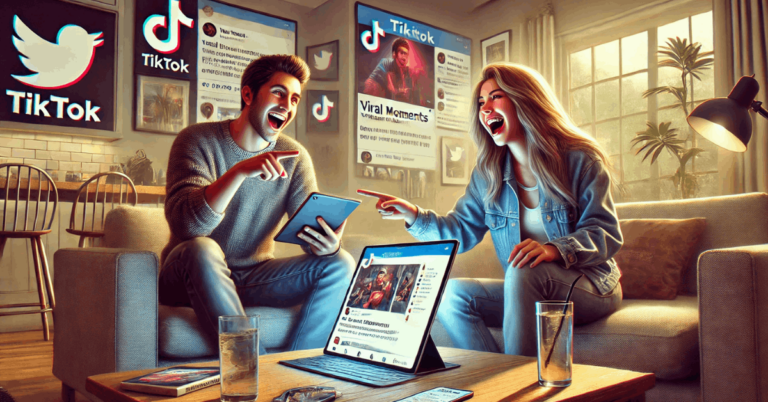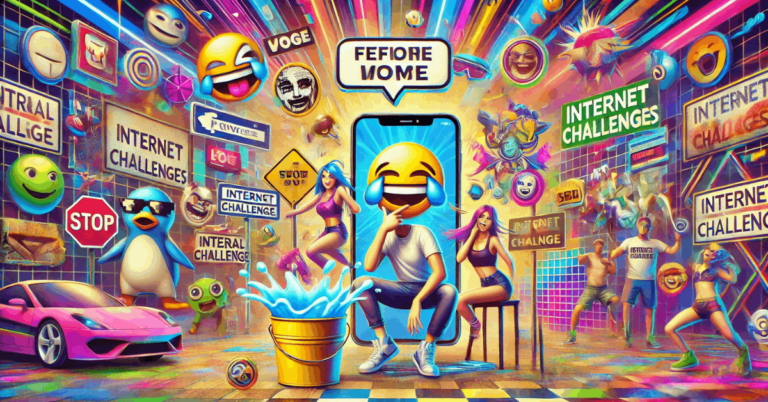Pop culture phenomena dominate the internet, shaping conversations, behaviors, and trends worldwide. This article examines why some moments capture global attention and spread like wildfire across digital platforms.
By understanding the mechanics of virality, you can grasp how trends influence culture, industries, and daily life. The purpose here is to decode what makes these moments resonate and break the internet.
What Are Pop Culture Phenomena?
Pop culture phenomena are moments, trends, or events that grab the attention of a large audience and spread quickly. They often define cultural moments, shaping how people talk, act, and engage with each other.
Technology, social media, and the collective interest of the public fuel these phenomena. Their impact goes beyond entertainment, influencing industries and societal norms.
Factors That Make Trends Go Viral
Some trends become global sensations due to a combination of timing, influence, and emotional appeal. Understanding these factors explains why certain moments dominate online spaces while others fade quickly.
Social Media Influence
Social media platforms are the backbone of viral trends, giving users instant access to shareable content. These platforms amplify visibility through algorithms that promote popular posts and hashtags.
- Twitter drives viral conversations through trending topics.
- Instagram uses visuals to spark creativity and mass sharing.
- TikTok thrives on short, engaging videos that encourage participation.
- Platforms like Facebook and YouTube sustain trends through longer engagement formats.
Influencers and Celebrities Driving Trends
Influencers and celebrities are key players in making trends go viral. Their large followings give them the power to set trends or amplify existing ones. Fans often replicate their actions, turning individual moments into massive cultural movements.
Timing and Relevance to Current Events
Timing is critical in determining a trend’s success. Trends tied to ongoing events or emotions resonate more because they feel relevant.
Whether during holidays, crises, or cultural shifts, timely trends tap into shared experiences, making them relatable and shareable.
Emotional Resonance with Audiences
Trends that evoke strong emotions spread because they connect with people on a personal level. Humor, shock value, or relatable moments often make audiences share content widely.
- Humor: Memes and funny videos are easy to share and adapt.
- Shock Value: Controversial or surprising content grabs immediate attention.
- Relatability: Trends that mirror everyday experiences resonate with a broad audience.
Case Studies of Viral Trends
Some trends become cultural phenomena because they resonate with audiences and inspire massive participation. These examples highlight how unique content or ideas can dominate global conversations.
The Ice Bucket Challenge
The Ice Bucket Challenge began as a way to raise awareness and funds for ALS research. Participants poured buckets of ice water over themselves, nominated others to do the same, and posted videos on social media.
It raised over $200 million worldwide, showcasing the power of viral trends for social causes.
Gangnam Style
“Gangnam Style” by PSY became the first YouTube video to surpass one billion views. Its catchy tune and memorable dance moves made it a global sensation.
The trend highlighted the potential of music videos to connect across cultures through entertainment and humor.
TikTok Dances and Viral Challenges
TikTok dances and challenges thrive because they encourage active participation. Creators post choreographed moves or challenges that users can recreate and share, leading to massive engagement.
These trends highlight how interactive content keeps audiences connected and invested.
Memes (e.g., “Distracted Boyfriend,” “Woman Yelling at a Cat”)
Memes like “Distracted Boyfriend” or “Woman Yelling at a Cat” gained popularity through their humor and adaptability.
People used these images with creative captions to reflect relatable situations. Memes stand out for their ability to evolve and stay relevant across different contexts.
Viral Moments (e.g., “#BlackLivesMatter,” “#MeToo”)
Movements like #BlackLivesMatter and #MeToo became viral because they addressed critical social issues.
These hashtags unified millions, providing a platform for voices advocating for justice and equality. Viral moments show how online platforms amplify activism and create lasting impact.
The Mechanics Behind Viral Trends
Viral trends spread because powerful online mechanisms amplify content and encourage participation. Understanding these elements reveals why some trends reach global audiences while others fade quickly.
Algorithmic Amplification
Social media algorithms boost content by prioritizing engagement-driven posts such as likes, comments, and shares.
Platforms like TikTok, Instagram, and Twitter show trending content to wider audiences, creating a snowball effect. This system ensures that highly engaging posts gain massive visibility in a short time.
Sharing Culture and Viral Loops
The ease of sharing on social media allows content to circulate rapidly. When users share posts, they create viral loops where others discover, engage, and reshare. This continuous cycle is key to how trends reach millions quickly.
The Role of Controversy or Drama
Controversial or dramatic content often sparks strong emotional reactions, driving higher engagement.
These posts become topics of debate or discussion, increasing visibility. Controversy acts as a catalyst for trends, drawing attention even from those outside the usual audience.
Mass Participation in Challenges or Hashtags
Trends involving challenges or hashtags succeed because they encourage users to join in. Participation creates a sense of community and inclusion, making the trend more relatable and engaging.
When millions contribute their versions, the trend gains momentum and widespread attention.
Cultural Impact of Viral Trends
Viral trends go beyond the internet, shaping how people interact and perceive the world. These cultural shifts affect everything from personal behavior to major industries.
Influence on Fashion, Language, and Behavior
Trends often inspire new fashion styles, catchphrases, and social habits. People adopt these changes quickly, using them to express identity and stay connected. Cultural shifts driven by trends show how powerful digital influence can be.
Shaping Public Opinion and Social Movements
Viral trends can unify people around shared values or causes. Movements like #BlackLivesMatter have brought attention to critical issues and influenced public opinion.
By giving individuals a platform, trends spark dialogue and encourage change.
The Blurring Line Between Entertainment and Activism
Trends that start as entertainment often evolve into calls for social action. Memes, videos, and challenges are used to promote awareness and accountability.
This fusion of fun and purpose has created a new space where activism becomes more accessible and engaging.
Impact on Traditional Media and Advertising
Mainstream media and advertisers are quick to adapt to viral trends. They use them as opportunities to connect with audiences more authentically and timely.
Integrating trends into campaigns, brands, and media outlets ensures they stay relevant in a changing cultural landscape.
The Bottom Line on Pop Culture Phenomena
Pop culture phenomena have a profound influence on how society communicates and engages. Viral trends emerge through timing, emotional appeal, and influential voices.
These phenomena leave a lasting mark on fashion, language, and cultural norms. Understanding why some trends break the internet provides valuable insight into the ongoing relationship between online content and everyday life.


